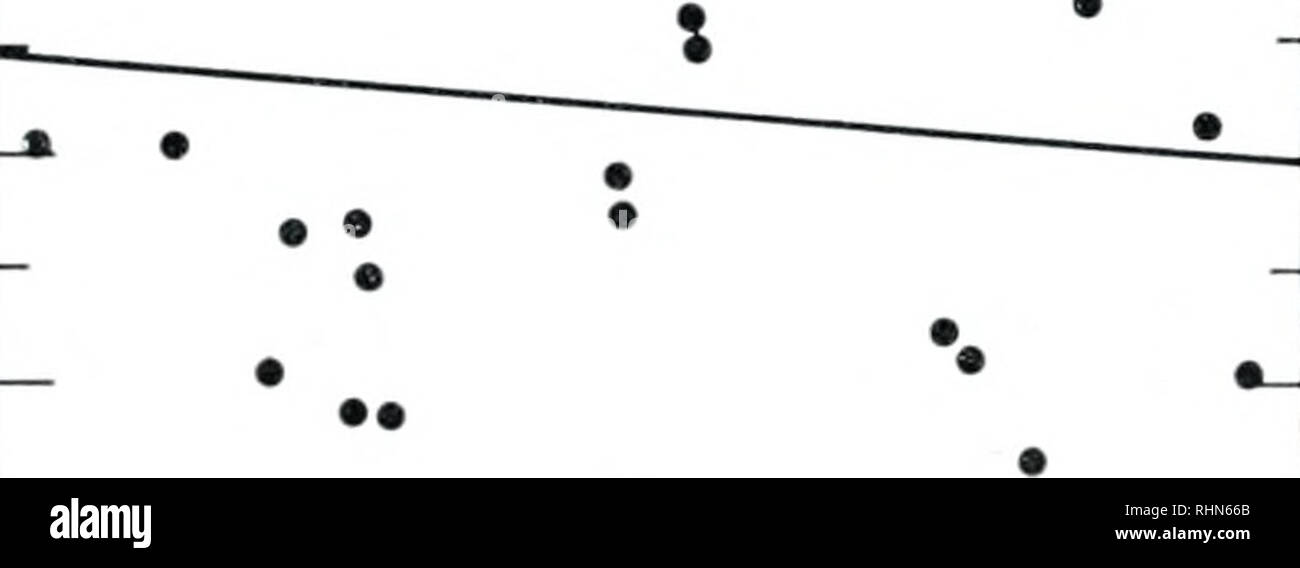. The Biological bulletin. Biology; Zoology; Biology; Marine Biology. SHELL GROWTH IN ARGOPECTEN 477 and 14C-carbonate into shell of animals in recirculating sea water followed a nearly linear course but at a lower rate. An abnormal chalky layer was noted on the inner shell surface near the edge of these animals. Examination of the abnormal layer by scanning electron microscopy indicated that the layer was clue to deposi- tion of material different from normal shell and that dissolution of normal shell layers adjoining the chalky deposit was not evident. This deposition may account for isotope

Image details
Contributor:
Library Book Collection / Alamy Stock PhotoImage ID:
RHN66BFile size:
7.2 MB (77.5 KB Compressed download)Releases:
Model - no | Property - noDo I need a release?Dimensions:
2607 x 959 px | 22.1 x 8.1 cm | 8.7 x 3.2 inches | 300dpiMore information:
This image is a public domain image, which means either that copyright has expired in the image or the copyright holder has waived their copyright. Alamy charges you a fee for access to the high resolution copy of the image.
This image could have imperfections as it’s either historical or reportage.
. The Biological bulletin. Biology; Zoology; Biology; Marine Biology. SHELL GROWTH IN ARGOPECTEN 477 and 14C-carbonate into shell of animals in recirculating sea water followed a nearly linear course but at a lower rate. An abnormal chalky layer was noted on the inner shell surface near the edge of these animals. Examination of the abnormal layer by scanning electron microscopy indicated that the layer was clue to deposi- tion of material different from normal shell and that dissolution of normal shell layers adjoining the chalky deposit was not evident. This deposition may account for isotope incorporation since growth in area at the edge did not occur. Studies described in the following sections were all carried nut with animals maintained in running sea water at Heaufnrt. Deposition rates in ranons shell re/ii/ms The rate of incorporation of 14C-carbonate varied considerably in different regions of the shell. Figure 1 shows that the highest rates were at the ventral shell edge in the area of the longest ribs and that the lowest rates were in the cen- tral shell region and at the dorsal edge adjacent to the hinge. For making measure- ments of maximum sensitivity, the region of the ventral edge was selected for subsequent studies. Rate of deposition and shell weight The rate of deposition of 4''Ca and 14C-carbonate at the ventral shell edge as a function of valve weight for one experiment is given in Figure 3. There was a virtual absence of trend in deposition rate with size. The correlation coefficient calculated was —0.22 for 14C-carbonate and —0.13 for 45Ca. Other data on depo- sition rates of 45Ca and "C-carbonate over a range of weights from 2 g to 12 g gave the same low correlation. The total number of animals used for these experi- ments was 131. cc 0 10.0 8.0 o 6.0 a- 4.0 2.0 = -0.22. 8 WEIGHT (GM 10 10.0 or ~ 8.0 o !s 6-0 & 4.0 2.0 T~ ~T~ ~T r=-O.I3 8 WEIGHT (GM 10 FIGURE 3. Rate of incorporation of 14C-carbonate and 43Ca as a function of weig